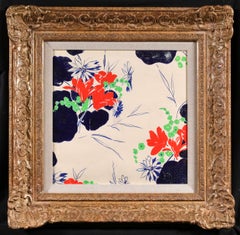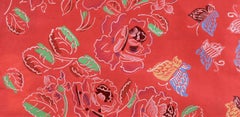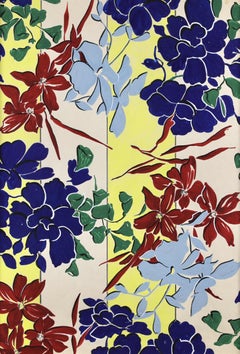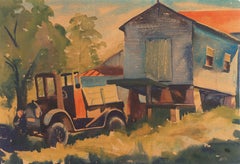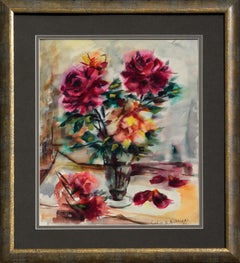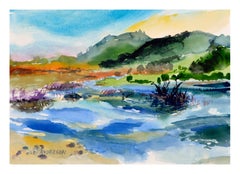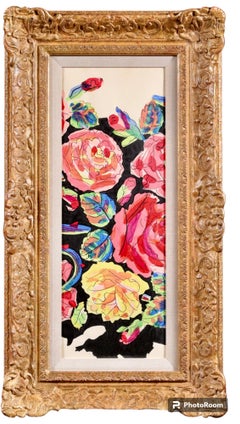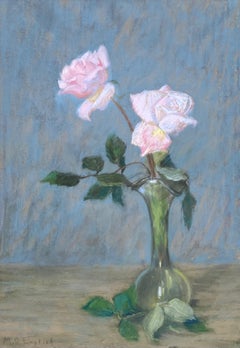1920s Still-life Drawings and Watercolors
Fauvist 1920s Still-life Drawings and Watercolors
Paper, Watercolor, Gouache
Fauvist 1920s Still-life Drawings and Watercolors
Paper, Watercolor, Gouache
Fauvist 1920s Still-life Drawings and Watercolors
Paper, Gouache
Fauvist 1920s Still-life Drawings and Watercolors
Paper, Watercolor, Gouache
Fauvist 1920s Still-life Drawings and Watercolors
Paper, Gouache
Modern 1920s Still-life Drawings and Watercolors
Watercolor, Gouache, Illustration Board
Abstract Expressionist 1920s Still-life Drawings and Watercolors
Ink, Watercolor
Realist 1920s Still-life Drawings and Watercolors
Paper, Watercolor, Ink, Gouache
Impressionist 1920s Still-life Drawings and Watercolors
Watercolor, Gouache, Laid Paper
Fauvist 1920s Still-life Drawings and Watercolors
Paper, Gouache
Fauvist 1920s Still-life Drawings and Watercolors
Paper, Watercolor, Gouache
Cubist 1920s Still-life Drawings and Watercolors
Pastel
Realist 1920s Still-life Drawings and Watercolors
Paper, Watercolor
Realist 1920s Still-life Drawings and Watercolors
Watercolor
Art Deco 1920s Still-life Drawings and Watercolors
Watercolor
American Modern 1920s Still-life Drawings and Watercolors
Watercolor
1920s Still-life Drawings and Watercolors
Charcoal, Paper, Watercolor
Cubist 1920s Still-life Drawings and Watercolors
Pastel
Art Deco 1920s Still-life Drawings and Watercolors
Watercolor
Art Nouveau 1920s Still-life Drawings and Watercolors
Watercolor
Realist 1920s Still-life Drawings and Watercolors
Ink
Other Art Style 1920s Still-life Drawings and Watercolors
Vellum, Color Pencil
Naturalistic 1920s Still-life Drawings and Watercolors
Paper, Charcoal
Impressionist 1920s Still-life Drawings and Watercolors
Paper, Watercolor
American Impressionist 1920s Still-life Drawings and Watercolors
Paper, Watercolor
Realist 1920s Still-life Drawings and Watercolors
Gouache, Graphite, Paper
1920s Still-life Drawings and Watercolors
Paper, Watercolor, Gouache
Contemporary 1920s Still-life Drawings and Watercolors
Paper, Gouache, Ink
Modern 1920s Still-life Drawings and Watercolors
Paper, Gouache
1920s Still-life Drawings and Watercolors
Silk, Watercolor, Handmade Paper, Gouache
1920s Still-life Drawings and Watercolors
Watercolor, Gouache, Handmade Paper, Silk
Contemporary 1920s Still-life Drawings and Watercolors
Ink, Watercolor, Archival Paper
Post-Impressionist 1920s Still-life Drawings and Watercolors
Watercolor, Laid Paper, Graphite
Contemporary 1920s Still-life Drawings and Watercolors
Paper, Ink, Watercolor, Gouache, Pen
Realist 1920s Still-life Drawings and Watercolors
Watercolor
Fauvist 1920s Still-life Drawings and Watercolors
Paper, Watercolor, Gouache
Post-Impressionist 1920s Still-life Drawings and Watercolors
Pastel, Fiberboard
Modern 1920s Still-life Drawings and Watercolors
Pastel
Modern 1920s Still-life Drawings and Watercolors
Pastel
Art Deco 1920s Still-life Drawings and Watercolors
Paper, Gouache, Pencil
Cubist 1920s Still-life Drawings and Watercolors
Pastel
Modern 1920s Still-life Drawings and Watercolors
Paper, Pastel
1920s Still-life Drawings and Watercolors
Ink, Pen
1920s Still-life Drawings and Watercolors
Charcoal, Paper
Other Art Style 1920s Still-life Drawings and Watercolors
Paper, Watercolor
1920s Still-life Drawings and Watercolors
Graphite, Watercolor
